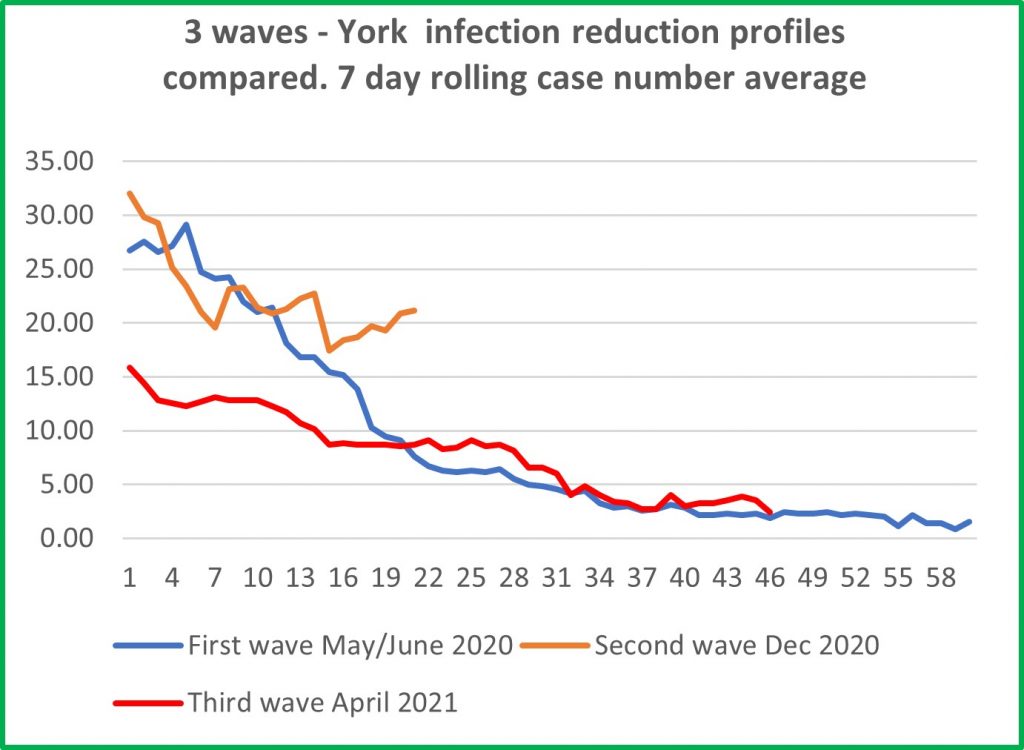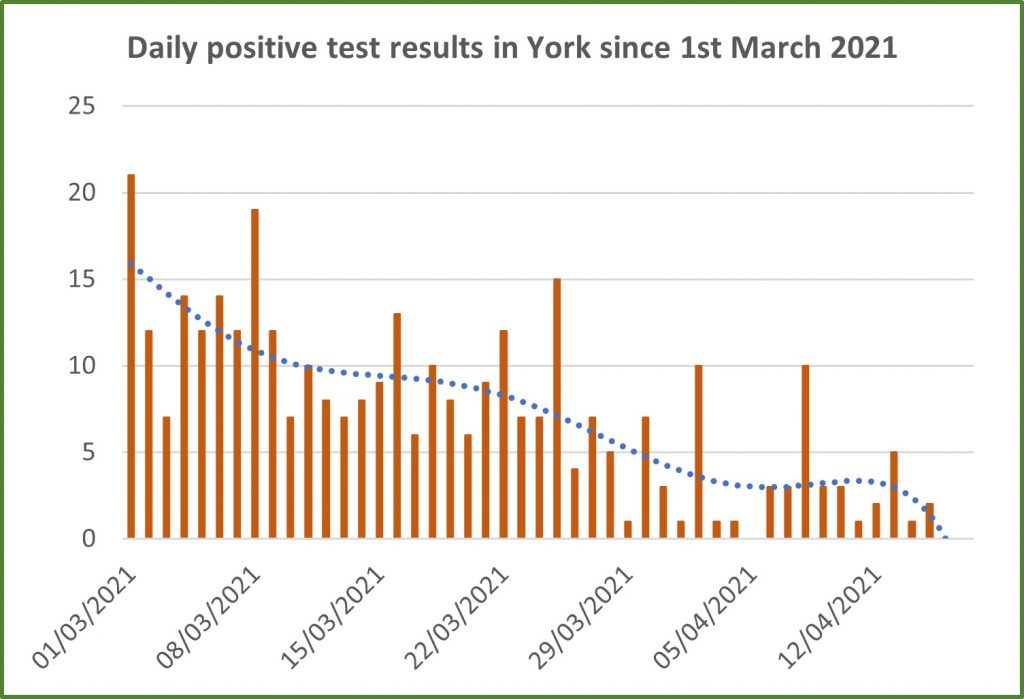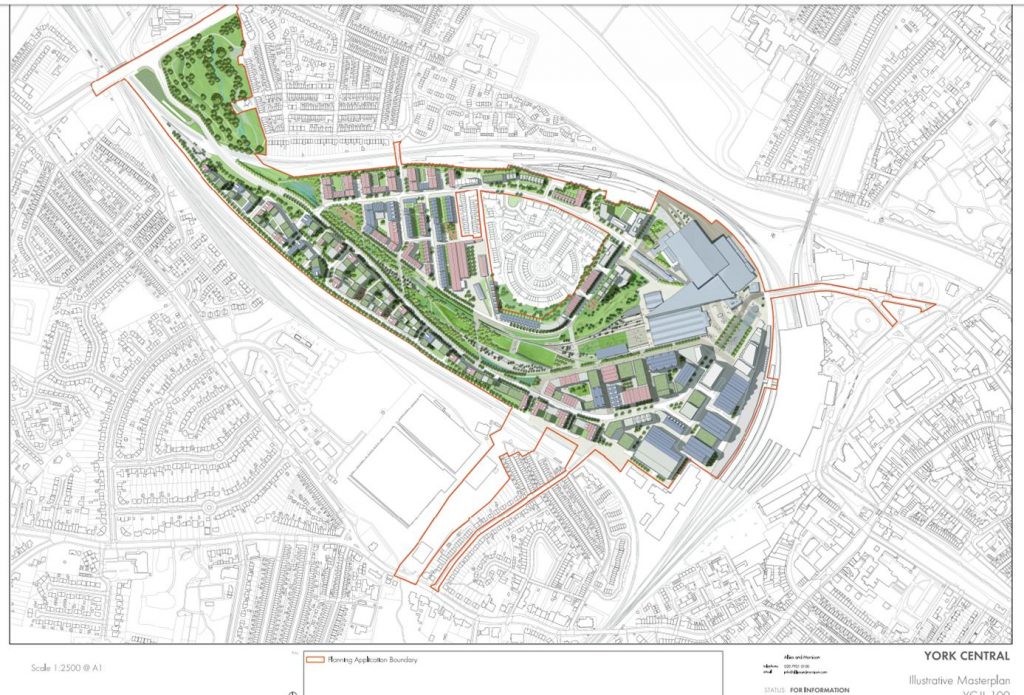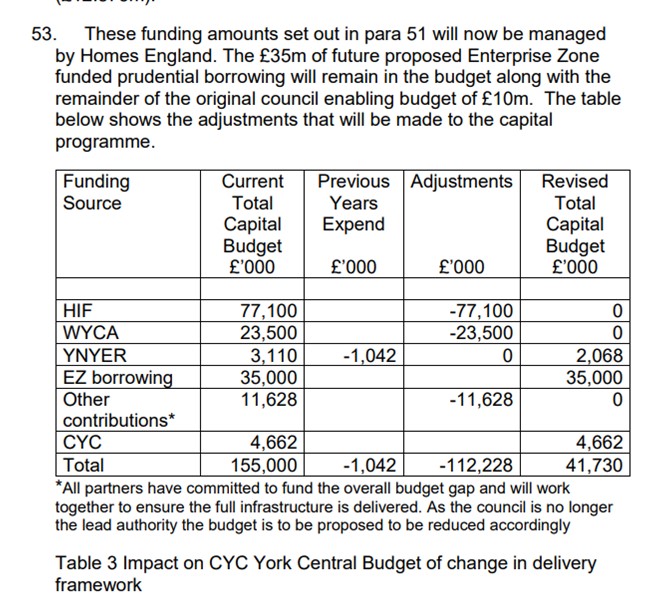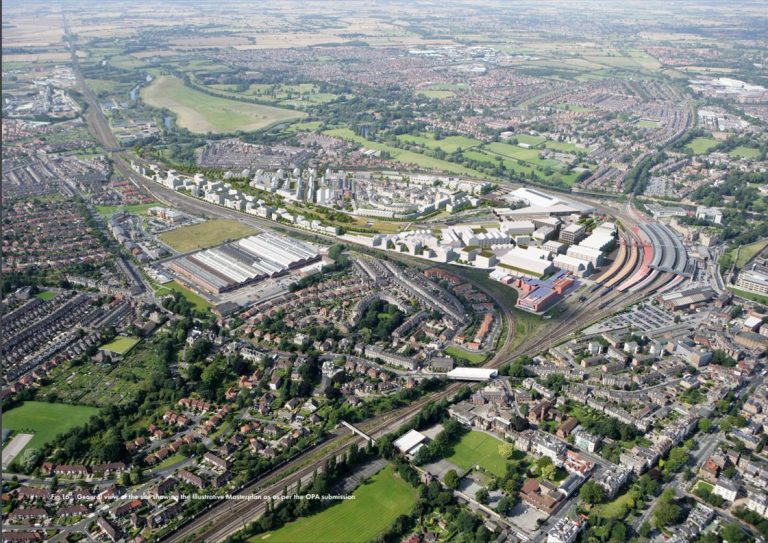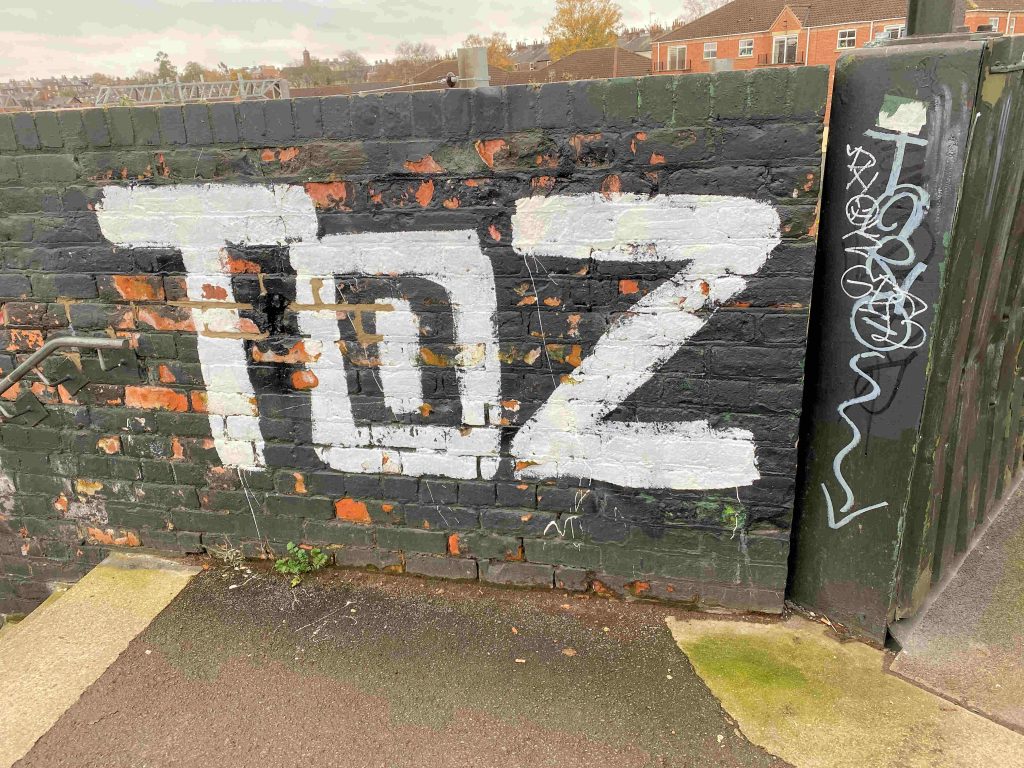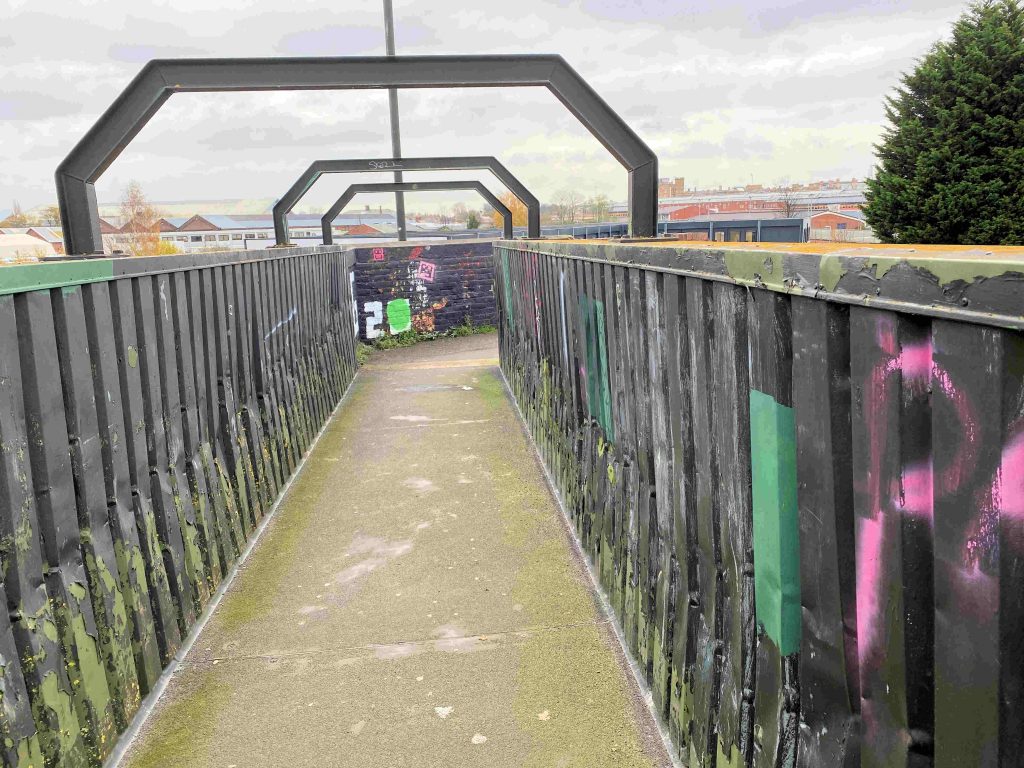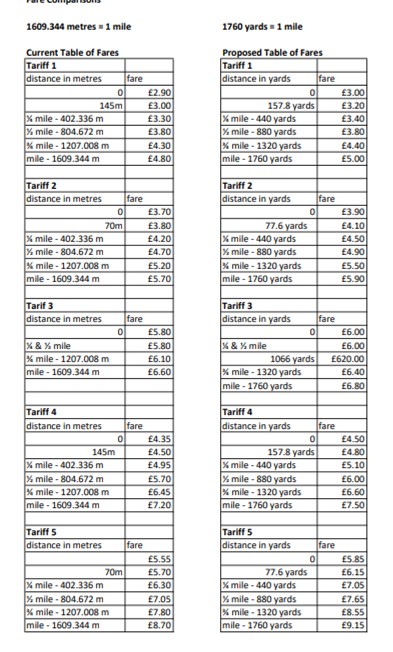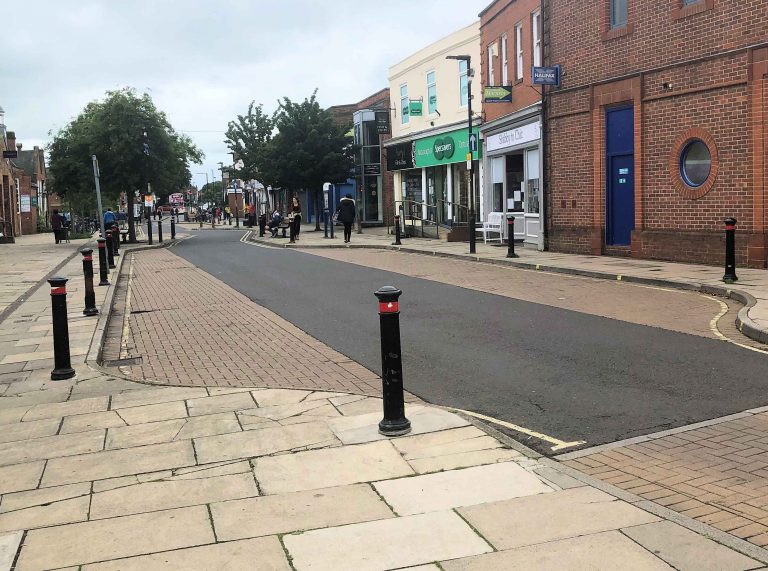Deaths
There have been no additional hospital deaths announced today
Test results
Just two positive test results today, bringing the cumulative total up to 12,176
The number of cases in the City has increased by one to 24.
The infection rate /100k population figure is 10.92. It is expected to remain around that figure over the weekend before falling again early next week.
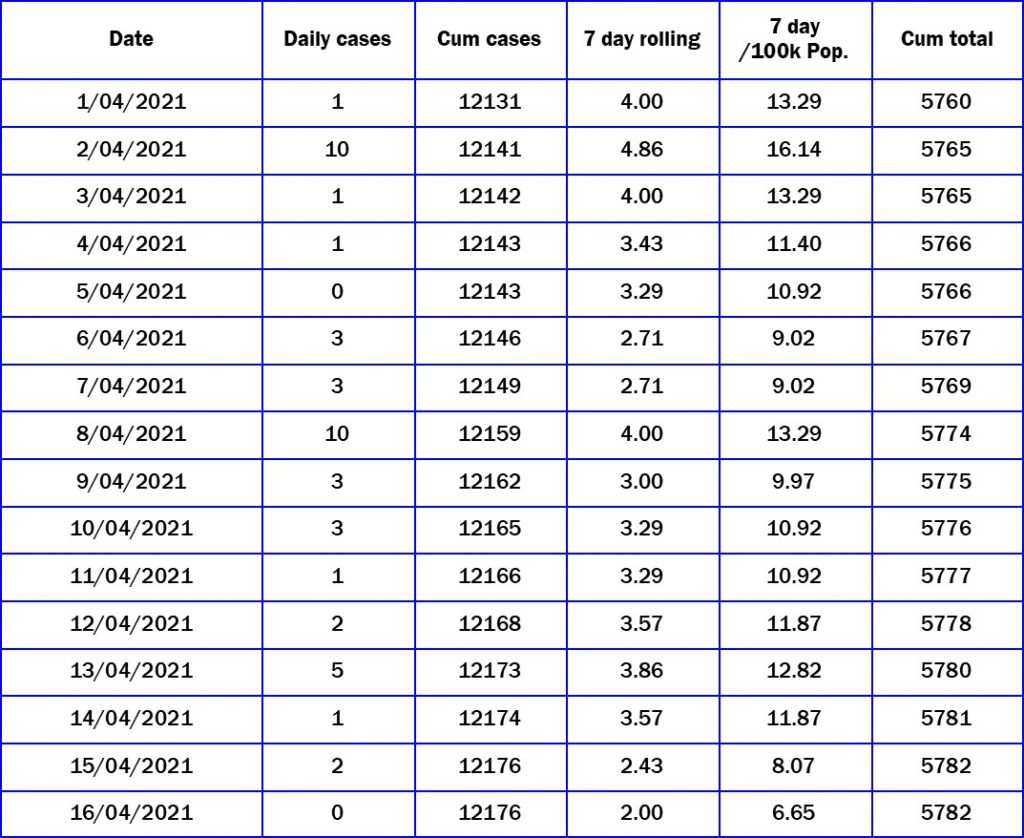
Neighbourhoods
Little change at neighbourhood or other levels today. We seem to be in a period of relative stability
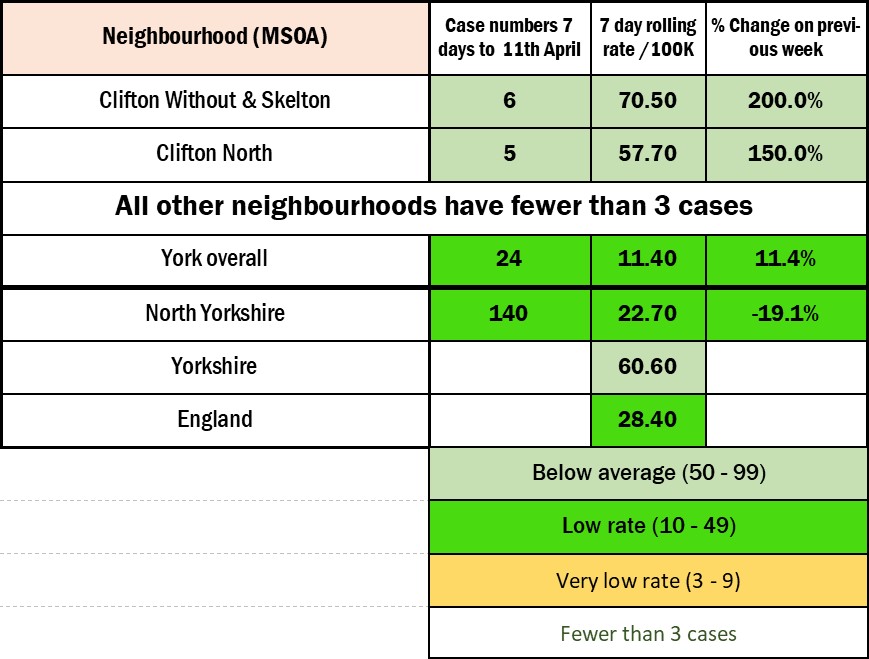
Vaccinations
Little change in vaccination numbers by age group at neighbourhood level during the week ending 11th April. This was the period when alot of second doses were administered.
Over the last few days the vaccinators have moved on to immunise more of the under 50’s age group.
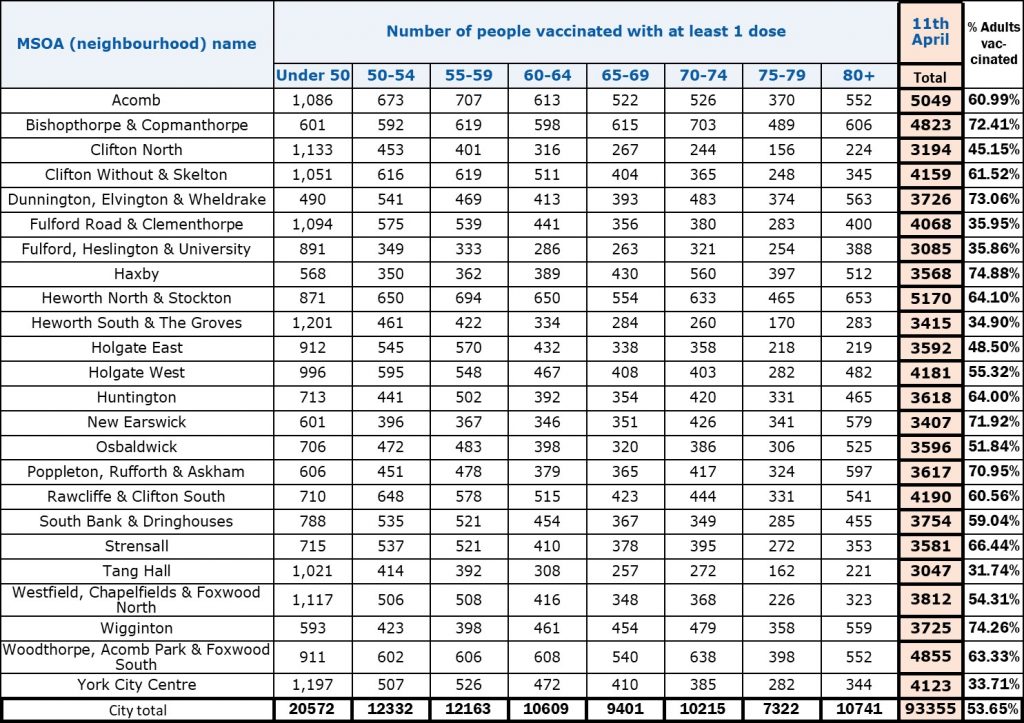
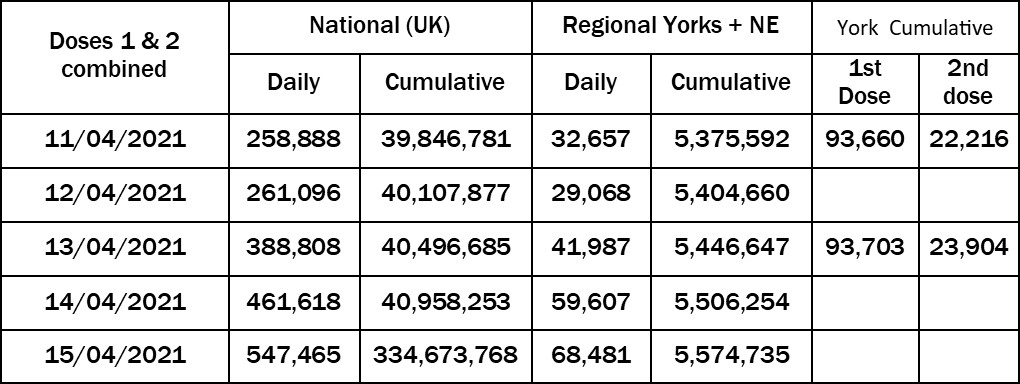
Tests
3856 PCR tests were completed during the week ending 11th April 2021
Of these, 0.5% were positive. This is the same proportion as the previous day.
2928 “lateral flow” tests were also conducted on 15th April.
Hospitals
Hospital patient numbers are continuing to decline
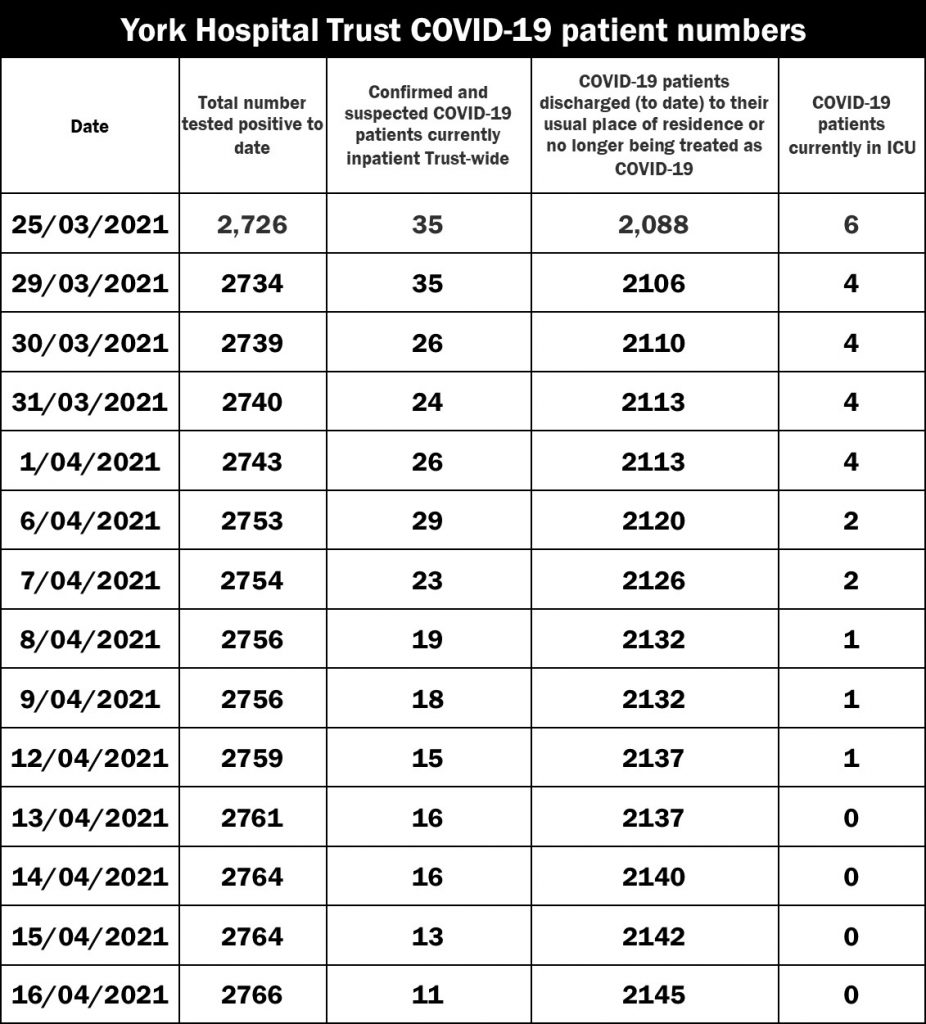
Council commentary
The York Council has updated its commentary on the pandemic.
The data is accurate as at 8.00 a.m. on Friday 16.04.21. Some narrative for the data covering the latest period is provided here below:
People with Covid Symptoms
• NHS Pathways/111 triages – as at 12.4.21 there had been 47 total covid triages in the CYC area in the last 7 days. The peak number of triages was 653 in the 7 day period to 20.9.20.
• As at 14.4.21, the Covid Symptom App estimates 38 per 100,000 in York with symptomatic covid (responses from a sample of 4,137 people). The peak rate was 1,283 on 7.1.21.
Diagnosed cases
• As at 15.4.21 York has had 12,174 cases since the start of the pandemic, a rate of 5,780 per 100,000 of population. The cumulative rate in York is below the national (6,802) and regional (7,056) averages. Cases identified through Lateral Flow Tests will be removed if they have a negative follow up PCR test within 72 hours so the cumulative total of cases can, on occasions, go down.
• The PHE ‘Exceedance’ rating compares the no. of new cases over a 14 day period with the previous 6 weeks and provides a RAG rating to indicate if the previously observed trend in the number of new cases is worsening. The latest rating for York (12.4.21) is Red. This is due to a higher than ‘expected’ number of cases on 2 occasions in the most recent 14 day monitoring period. In recent weeks the number of cases have been low in York which has an effect on the thresholds used to determine the RAG rating – a small change can mean the difference between a red, amber and green rating.
• The provisional rate of new Covid cases per 100,000 of population for the period 7.4.21 to 13.4.21 in York is 12.8 (using data published on Gov.uk on 15.4.21).
• The latest official “validated” rate of new Covid cases per 100,000 of population for the period 4.4.21 to 10.4.21 was 10.9. The national and regional averages at this date were 28 and 61.2 respectively (using data published on Gov.uk on 15.4.21).
• York is currently ranked 12th out of 149 Upper Tier Local Authorities (UTLAs) in England with a rank of 1 indicating the lowest 7 day rate.
• For the 7 day period 3.4.21.to 9.4.21, 1 ward (Fulford & Heslington) had seen a statistically significant fall in the rate compared with the 7 day period 27.3.21 to 2.4.21. 1 ward (Clifton) had seen a significant rise in the rate. The remaining wards have shown no significant change. The number of cases in each ward varies from 0 to 5 and rates vary from 0 to 49.8 per 100,000. 11 wards had zero cases in the latest 7 day period.
• The rate of new Covid cases per 100,000 of population for the period 4.4.21 to 10.4.21 for people aged 60+ in York was 2. The national and regional averages were 11.3 and 26.8 respectively.
• As at 13.4.21, the latest 7 day positivity rate in York (Pillar 2 PCR tests only) was 0.79%. The national and regional averages are 1.3% and 3.1% respectively.
• As at 13.4.21 the latest 7 day positivity rate in York (Pillar 2 Lateral Flow Tests only) was 0.05%. The national and regional averages are 0.1% and 0.2% respectively.
• As at 13.4.21 the latest 7 day positivity rate in York (Pillar 1 tests only) was 0.4%. The national average is 0.7%.
• As at 15.4.21 York University reported 1 individual within the University community who was currently self-isolating because they have had a positive COVID-19 test. The peak number was 331 on the 19.10.20.
• As at 5.4.21 York St. John reported 0 individuals within the University community who were currently self-isolating because they have had a positive COVID-19 test. The peak number was 82 on the 8.10.20.
Contact Tracing
• Since 28.5.20 a total of 11,376 confirmed CYC Covid cases have been uploaded into the NHS Test and Trace system and 10,272 of the cases have been completed (90.3%). 26,541 ‘contacts’ of these cases have been identified and 20,152 of these have been completed (75.9%). Source: PHE Report.
• Local Contact Tracing. Between 10.3.21 and 9.4.21, 120 referrals had been actioned by the local contact tracing service. Of the referrals actioned, 111 (92.5%) were successful and 9 (7.5%) were unable to be reached via phone or home visit, but guidance leaflets were posted where possible. (NB on the 10.3.21 the local CYC team became responsible for contacting all cases rather than just those that the national team could not contact).
Cases in Residential Care Settings
• As at 13.4.21 there were 0 care homes in the CYC area with confirmed Covid-19 infection (at least 1 case of either a staff member or resident).
• The latest ‘outbreak’ (2+ cases) in a residential care setting in York were reported by PHE on 25.2.21 (1 home).
Cases amongst School Aged Children
• In the 7 days up to 12.4.21 there was 1 child of primary or secondary school age who tested positive across 1 school.
COVID Bed Occupancy in York Hospital
• As at 13.4.21 there were 9 confirmed Covid-19 patients in General and Acute beds. The peak number was 157 on 19.1.21.
• As at 13.4.21 there were 0 confirmed Covid-19 patients and 0 suspected Covid-19 patients in the Intensive Treatment Unit. The peak number for people in ITU was 19 on 10.5.20.
• As at 13.4.21 there had been 0 patients admitted with suspected Covid-19 and 0 with confirmed Covid-19 in the previous 24 hours.
• As at 13.4.21 there had been 1 confirmed patient discharged with COVID-19 in last 24 hours.
• Between 5.4.21 and 11.4.21, 4 CYC residents were discharged from York hospital after needing NHS care for symptoms linked to covid-19 infection.
R Number
• The ‘R’ value (the number of people that one infected person will pass on a virus to, on average) for the North East and Yorkshire area on 9.4.21 was estimated to be in the range 0.8 to 1.0. The previous estimate was (0.8 to 1.0) on 2.4.21.
Total Vaccinations
• As at 14.4.21 a total of 93,825 CYC residents have had the first dose of the vaccine. This represents 44.5% of the estimated total population of York and 53.9% of the estimated adult (18+) population of York.
• As at 14.4.21 a total of 25,365 CYC residents have had both doses of the vaccine. This represents 12.0% of the estimated total population of York and 14.6% of the estimated adult (18+) population of York.
Deaths
The two sources about deaths from Covid-19 at LA level are ONS data and local registrar data. They are derived from the same source (civil registration data). ONS data is more comprehensive as it includes deaths of York residents which have occurred and been registered outside York. Local registrar data is useful as it enables a breakdown by age and gender. The most recently available data is summarised below:
• ONS weekly data: In the most recent period (Week 13: 27.3.21 to 2.4.21) 2 Covid-19 deaths were recorded as having occurred for CYC residents. In weeks 10, 11 and 12 there had been 3, 4 and 0 deaths respectively.
• ONS Cumulative data: Since the start of the pandemic, for deaths occurring up to 2nd April 2021 and registered up to 10th April 2021, 390 Covid-19 deaths were recorded as having occurred for CYC residents (227 in hospital, 134 in care homes, 21 at home and 8 in a hospice). The number of deaths per 100,000 of population in York is 185.17 which is lower than the national average of 229.58
• Local Registrar data (Cumulative): Since the start of the pandemic (using data for deaths occurring up to 7.4.21), a cumulative total of 372 deaths of CYC residents where COVID-19 was mentioned (confirmed or suspected) on the death certificate, have been registered. The average age of the people who died was 82.2, with an age range of 44-104. The age profile of those dying in York is older than the national average (79.6% of those who died in York were aged 75+ compared with 73.2% nationally). 178 of the 372 were male (47.8%), less than the national average (54.3%).

